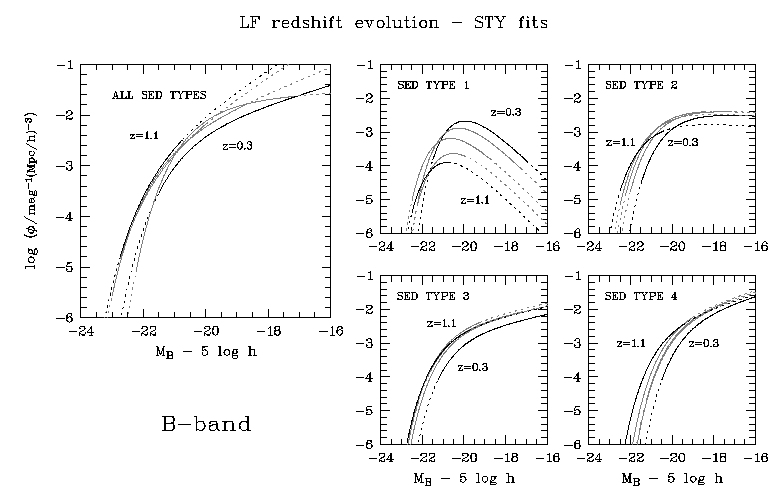- a spectrophotometric 17-filter survey -
project: galaxy luminosity function at z=0.2..1.2 Figure: The evolution of the galaxy luminosity function is clearly differential by SED type.

project: galaxy luminosity function at z=0.2..1.2 Figure: The evolution of the galaxy luminosity function is clearly differential by SED type.

We present a detailed empirical assessment of how the galaxy luminosity
function and stellar luminosity density evolves over the last half of the universe's age (z=0.2..1.2) for galaxies of different spectral energy distributions (SED). The results are based on ~25000 galaxies (R<24) with redshift measurements (error ~0.03) and SEDs across 350..930 nm. The redshifts and SEDs were derived from medium-band photometry in 17 filters, observed as part of the COMBO-17 survey over three disjoint fields with a total area of 0.78 square degrees. Luminosity functions (LF), binned in redshift and SED-type, are presented in the restframe passbands of the SDSS r-band, the Johnson B-band and a synthetic UV continuum band at 280~nm.
We find that the luminosity function depends strongly on SED-type at all redshifts covered. The shape of the LF, i.e. the faint-end power-law slope, does depend on SED type, but not on redshift. However, the redshift evolution of the characteristic luminosity M* and density phi* depends strongly on SED-type:
Comparison of the three independent sight-lines shows that our results are not significantly affected by large-scale structure. Our lowest redshift bin at z=[0.2,0.4] largely agrees with the recent assessment of the present-day galaxy population by SDSS and 2dFGRS and deviates only by an excess of faint blue galaxies at z~0.3 compared to very local samples. Overall our findings provide a set of new and much more precise constraints to model the waning of overall star formation activity, the demise of star-bursts and the strong emergence of old galaxies, with hardly any young population, over the last 6-8 Gigayears.
Contact person: Christian Wolf, Oxford
Back to COMBO-17 science page
Last update Sep 19, 2002, CW